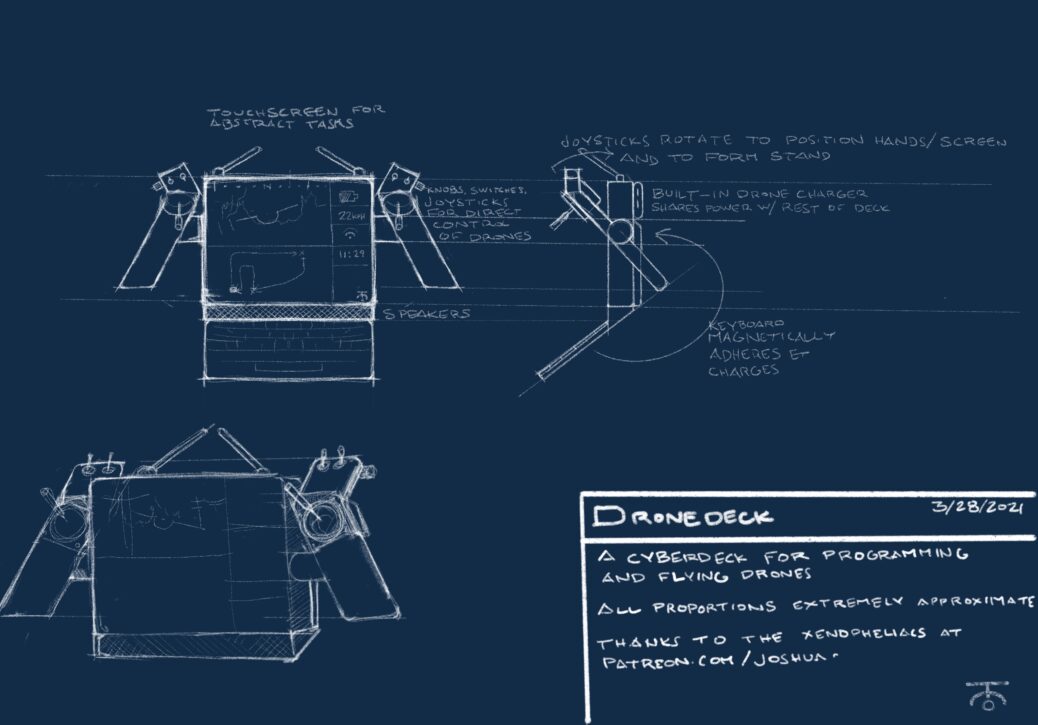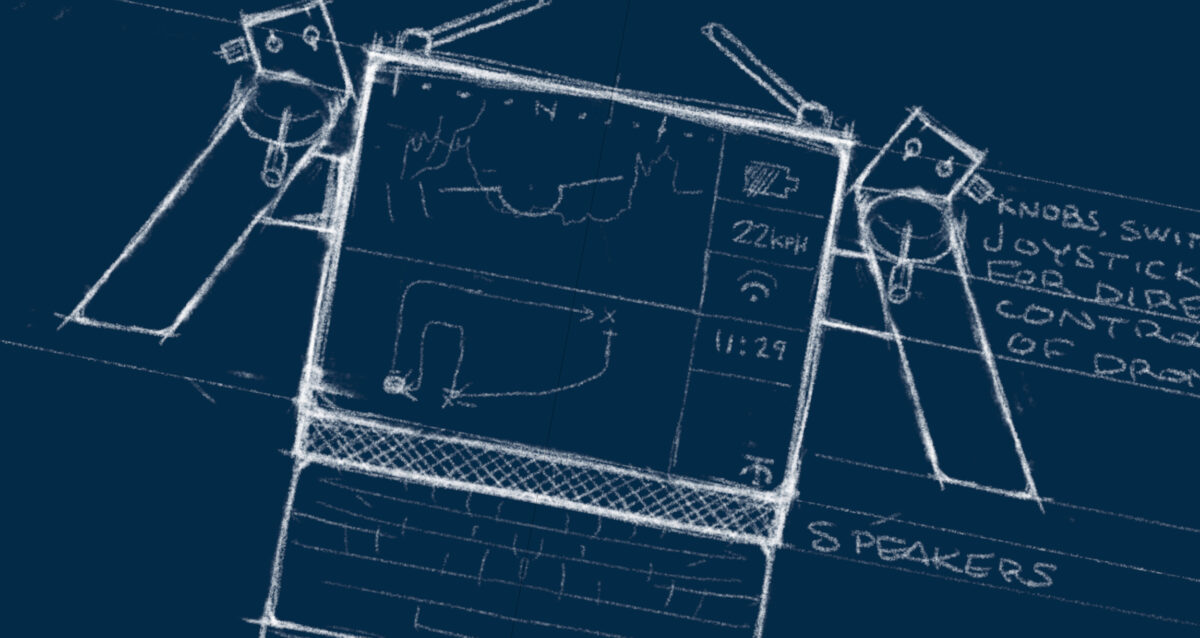The Dronedeck is a bit of design fiction, but one that is entirely technically feasible right now. This is a matter of hours spend designing, fabricating, and testing, not technical possibility.

Part 2 in this month’s series of posts written as sloppily as possible because my Patreon supporters asked me to take a breather.
Much of my life has been devoted to getting objects to fly. I love the graceful art, the subtleties of the design, the power you find once you’ve built something to a purpose that our instincts still tells us is impossible. It’s amazing when you stand on a sand dune holding this object that was just ideas and materials a couple weeks ago, then let it go and see it silently fly with the gulls.
And then I started building drones. I smashed a little camera drone up pretty bad at one point and rebuilt it out of carbon fiber. I loved that little guy. It rests in the top of a very tall tree now.
One of the missing parts for me has always been the radios, which have been outside of the realm of hobby-level design. At one point, I was using one of the most sophisticated digital transmitters of its time, and it still struck me as an incredibly primitive piece of electronic gear; a traditional transmitter with computation applied haphazardly, instead of figuring out how to apply computation well to the problems of flight control.
But today, we have microcontrollers, Raspberry Pi, Betaflight, first-person cameras, and NRF24 digital radio modules. And drones are flying computers, not aerodynamic shapes with moveable control surfaces.
The addition of flying robots to the hobbyist palette is incredible. It means that we can move the entire field into the realm of cybernetic experience, expanding human senses and affect out into the world.
This little cyberdeck I’ve sketched out here is what I’m thinking for a controller right now. It contains a couple of different radios for different functions. Not only can it communicate with a drone via NRF24 radio (a range of kilometers), but can also connect to the Internet through the phone system, sharing your POV live on Twitch if you like. You can plot courses with Betaflight or take direct control with built-in joysticks. It sends back telemetry like altitude and battery levels, as well as GPS information.
I’m not yet at the point where I want to build this thing yet, but I can feel it coming!

